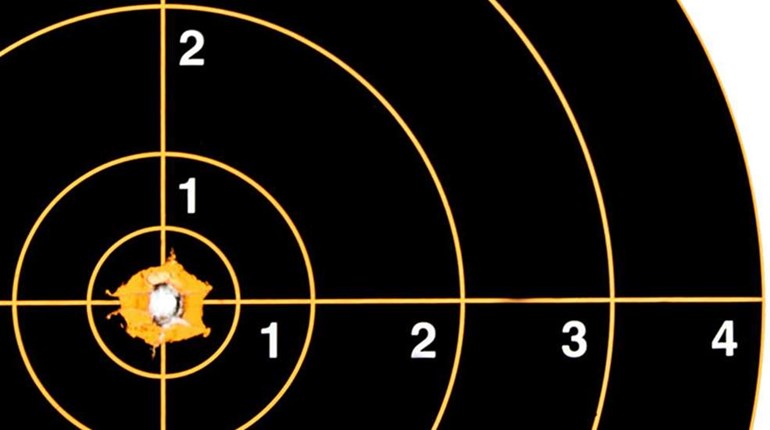
The Problem
Recently, while listening in on a conversation regarding shooting, the guy who seemed to have all the knowledge was giving some tips on improving marksmanship. He talked about shooting for precision and for multiple shots at speed, such as shooting plates on a plate rack. One theme mentioned over and over again was the necessity for you, the shooter, to be able to “call your shots.” At first you thought he was referring to a new smartphone app, but later you gathered that wasn’t the case. As a result, you’re left wondering what calling your shots really means and how it is beneficial to hitting a target.
The Solution
“Calling your shot” is an old phrase used to describe a shooter’s ability to successfully tell where their shot/shots hit the target(s) before even looking downrange to verify the fruits of their labor. This results from the shooter’s mental snapshot of their sight picture (their sights in relation to the target) at the moment the bullet exits the muzzle, each time a shot is fired.
In formal competitive shooting, a coach will use the ability of a shooter to call their shots as a diagnostic tool. The coach will have the shooter mark on a target or plot sheet after each shot or series of shots where they think the shots impacted the target. By comparing the plot with the actual target, both the coach and the shooter will know what areas of shot delivery need to be worked on and improved.
Commonly, when the shot on the target does not correspond with the shot on the plot sheet, one or more of the marksmanship fundamentals necessary for firing a good shot is missing. The challenge then is to detect and correct the deficiencies in the shooter’s delivery.
If a shooter has no idea where their shots are going for the majority of the shots they fire, it is a good bet they are closing their eyes before pulling the trigger, making it anybody’s guess as to where the muzzle was pointing when the bullet was released downrange.
In a case such as this, the shooter needs to be coached through the noise- and movement-inoculation drills to overcome their innate reaction to the sound of the gun and the movement of the gun toward their face in their visual field. Once these mostly emotional components are satisfied, the shooter will be more likely to keep their eyes open through the shot-delivery process and the bullet(s) will hit closer to where they are expected.
Another deficiency in calling the shot can be allowing the eye’s focus to drift forward toward the target, which results in the shot impacting in the called direction but farther away from the target’s center than originally called. In this case the eye’s focus was not totally on the sights, another indicator of poor follow-through.
As an addendum to the aforementioned wider-than-called shots, there may be a call that is exactly the opposite of the call on-target. For example, the call may be low on the target but the point-of-impact is actually high. This comes from the eye’s focus transitioning past the sights, but still recognizing the sight picture isn’t where the shooter wants it to be, whereby the shooter over-corrects the position of the sights on the target at the last second rather than just accepting the natural movement of the gun. In either case, at least the shooter’s eyes are open—even if they aren’t properly focused.
A quick cure to help the shooter keep focus on the sights long enough for the bullet to exit the muzzle is to suggest he or she be aware of the smoke, flash and blast at the muzzle, which is just below the front sight they should be focusing on. If the firearm is a semi-automatic, the ejection port for the spent brass is usually located within the shooter’s field of peripheral vision. Brass is ejected each time the gun is fired and should be noticed by the shooter if their eyes are open at the moment of firing. Flash recognition at the barrel/cylinder gap of a revolver will accomplish the same thing.
By noticing the atmospheric disturbance at the muzzle and the ejecting brass, the follow-through on delivering an accurate shot is all but guaranteed. By practicing good shooting principles from the start of shot delivery through the follow-through of each shot fired, it will be apparent where the sights were relative to the target. Therefore, calling each shot accurately—as well as consistent bullet placement on the intended target—will be accomplished, regardless of whether a single or multiple shots are fired.






































